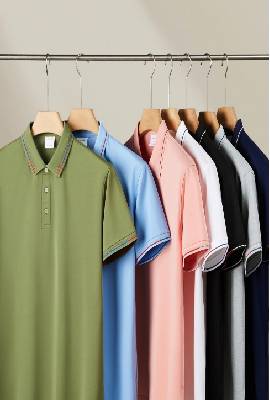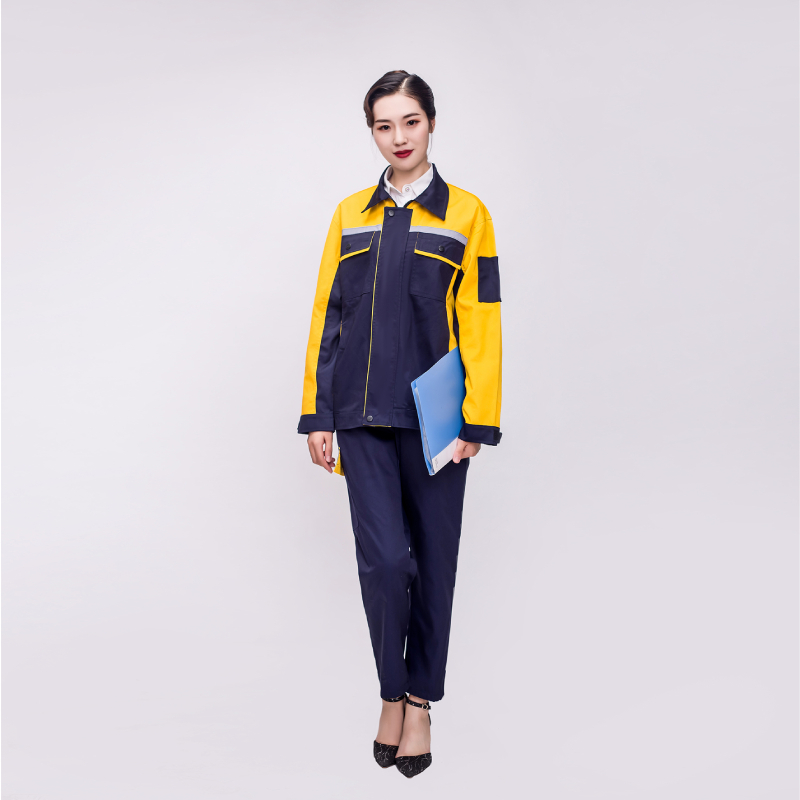6 月 . 10, 2025 16:08 Back to list
Moisture Wicking Uniform Polo Shirts – Custom Breathable Polo Shirts for Work & Teams
- Introduction to moisture wicking uniform polo shirts
and moisture control technology - The science behind moisture wicking fabrics
- Technical advantages and material comparisons
- Industry manufacturer comparison with performance data
- Custom solutions for moisture wicking polo shirts
- Application cases and practical implementations
- Future of moisture wicking uniform polo shirts

(moisture wicking uniform polo shirts)
Introduction: Moisture Wicking Uniform Polo Shirts for Modern Workwear
Moisture wicking uniform polo shirts have become a critical component in professional apparel, melding comfort and function for demanding work environments. Initially developed for athletic use, these garments now enhance productivity and well-being across various industries. The global sportswear market, which includes moisture wicking apparel, reached $353.5 billion in 2022 and is forecasted to grow at a CAGR of 6.6% through 2027. This surge is influenced by the increasing recognition of thermal comfort and moisture management in the workplace. As organizations prioritize employee comfort, moisture wicking uniform polo shirts are setting a new standard in workwear efficiency and style.
The Science Behind Moisture Wicking Fabrics
Moisture wicking refers to the capability of a fabric to draw perspiration away from the skin and move it to the fabric's surface for evaporation. Highly engineered fibers—such as polyester, nylon, and advanced blends—play a pivotal role. These fibers have hydrophobic properties but are constructed with unique weaves or surface coatings that facilitate capillary action. Scientific studies show that an average human body can produce up to 1.5 liters of sweat per hour during intensive activities. Hence, the ability to quickly transfer and evaporate sweat is paramount for preventing skin irritation, maintaining hygiene, and regulating body temperature. New developments, such as mesh panel integration and nano-coatings, are further increasing the efficiency of moisture wicking polo shirts, making them indispensable for harsh and dynamic working conditions.
Technical Advantages and Material Comparisons
The evolution of moisture wicking uniform polo shirts is marked by superior materials and technologies. Leading features now include anti-microbial finishes, four-way stretch construction, UPF sun protection, and abrasion resistance. Compared to traditional cotton polos, which absorb and retain moisture, synthetic wicking fabrics like polyester blends can dry 50% faster and are nearly 40% lighter in weight. Additionally, silver ion integration in certain fabrics helps eliminate odor-causing bacteria, extending the freshness and lifecycle of the shirt. The following table presents a focused performance comparison between traditional cotton polos and leading moisture wicking polo shirts based on crucial parameters:
| Fabric Type | Drying Time (minutes) | Air Permeability (mm/s) | Odor Resistance | UPF Rating |
|---|---|---|---|---|
| Traditional Cotton | 46 | 110 | Low | 5 |
| Polyester Wicking Polo | 22 | 185 | Medium | 30 |
| Synthetic Blend with Silver Ions | 19 | 210 | High | 50+ |
This comparative data underscores the technical superiority of advanced materials used in today’s moisture wicking uniform polo shirts over traditional options.
Industry Manufacturer Comparison with Performance Data
A number of industry leaders have pushed the limits of innovation, producing moisture wicking polo shirts geared for both comfort and durability. To better evaluate the landscape, the table below contrasts three notable manufacturers based on performance testing, sustainability practices, and customization capabilities:
| Brand | Moisture Transfer Rate (g/m2/h) | Sustainability Score | Customization Options | Warranty Period (months) |
|---|---|---|---|---|
| PerfromFit | 900 | 8/10 (Recycled materials, low-impact dyes) | Wide (logos, colors, fits) | 18 |
| EcoThread | 850 | 9/10 (Organic fibers, eco-packaging) | Moderate (logos, basic palette) | 24 |
| ClassicWear | 700 | 5/10 (Conventional materials) | Limited (logo only) | 12 |
This head-to-head analysis reveals the clear edge held by brands emphasizing both innovation and eco-responsibility. Companies like PerfromFit and EcoThread are raising industry standards for both performance and sustainability in uniform polo solutions.
Custom Solutions for Moisture Wicking Polo Shirts
While off-the-shelf moisture wicking polo shirts provide immediate benefits, organizations often require tailored solutions to align with branding, team structure, or tactical needs. Customization often includes selecting specific moisture management technologies, incorporating brand colors and embroidered logos, and choosing from various fits—including athletic, classic, or relaxed. Leading suppliers offer fabric engineering services where the level of stretch, breathability, and UV protection can be customized per requirement. Minimum order quantities typically range from 50 to 250 pieces, with lead times from 3-8 weeks, depending on complexity. The adoption of 3D fitting software and digital color matching ensures true-to-design production. Furthermore, customization is increasingly going beyond aesthetics; companies can now specify anti-static fibers, odor-control treatments, or temperature-adaptive linings for environments such as kitchens, outdoor teams, or healthcare settings, ensuring unparalleled employee satisfaction and productivity.
Application Cases and Practical Implementations
Moisture wicking uniform polo shirts are now ubiquitous across a wealth of sectors due to their versatility and performance benefits. In the hospitality industry, hotels report a 28% reduction in laundering costs and a 22% improvement in employee comfort ratings after switching to wicking polos. Logistics companies have observed that drivers and warehouse workers experience up to 35% less downtime due to discomfort or overheating. In education, faculty outfitted with custom polos have noted a shift toward a more unified, professional appearance while reporting improved daily satisfaction scores. A retail chain replacing their legacy uniforms with moisture wicking options saw employee turnover drop by 15% over twelve months. These case studies highlight the real-world value delivered by modern uniform solutions and underscore the return on investment for businesses that prioritize advanced apparel technologies.
The Future of Moisture Wicking Uniform Polo Shirts: Trends and Innovations
With the continuous evolution of workplace standards and smart textiles, the landscape of moisture wicking uniform polo shirts is set for further transformation. Ongoing research focuses on adaptive fibers that can modulate wicking efficiency based on temperature or activity level. Integration with wearable technology—such as embedded health sensors or RFID for inventory management—is on the horizon. Equally, sustainability is pushing the use of biodegradable polymers and closed-loop recycling for fabric production. As manufacturers respond to growing demands for both functional and ethical apparel, it is clear that moisture wicking uniform polo shirts will remain essential across industries, reflecting innovation, comfort, and corporate responsibility for years to come.

(moisture wicking uniform polo shirts)
FAQS on moisture wicking uniform polo shirts
Q: What are moisture wicking uniform polo shirts?
A: Moisture wicking uniform polo shirts are specially designed shirts that draw sweat away from your body to keep you dry. These shirts are ideal for active work environments. They help maintain comfort and a professional appearance.
Q: How do moisture wicking polo shirts work?
A: Moisture wicking polo shirts use advanced fabrics that quickly move moisture from your skin to the fabric’s surface. This helps sweat evaporate faster. The shirts keep you cool and comfortable all day.
Q: Can I get custom moisture wicking polo shirts for my team?
A: Yes, many suppliers offer custom moisture wicking polo shirts. You can add logos, colors, and other branding to fit your needs. Custom polos are great for teams, businesses, and events.
Q: Are moisture wicking uniform polo shirts suitable for hot climates?
A: Absolutely, moisture wicking uniform polo shirts are perfect for hot climates. They help manage sweat and keep you cool. This makes them ideal for outdoor work or summer uniforms.
Q: How should I care for my moisture wicking polo shirts?
A: Wash your moisture wicking polo shirts in cold water and avoid fabric softeners. Tumble dry on low or air dry for best results. This helps maintain their moisture wicking properties.
This is the last article
-
Top-Quality Work Gloves for Every Task
NewsNov.01,2024
-
The Ultimate Guide to Mens Fishing Jackets
NewsNov.01,2024
-
The Best Work Gloves for Every Job
NewsNov.01,2024
-
The Best in Polo Shirts for Your Wardrobe
NewsNov.01,2024
-
Enhance Safety with Our High Visibility Vests
NewsNov.01,2024
-
Elevate Your Culinary Experience with Premium Chef Uniforms
NewsNov.01,2024




